Dwarf planets in our Solar System: How many are there?
11th Dec 2023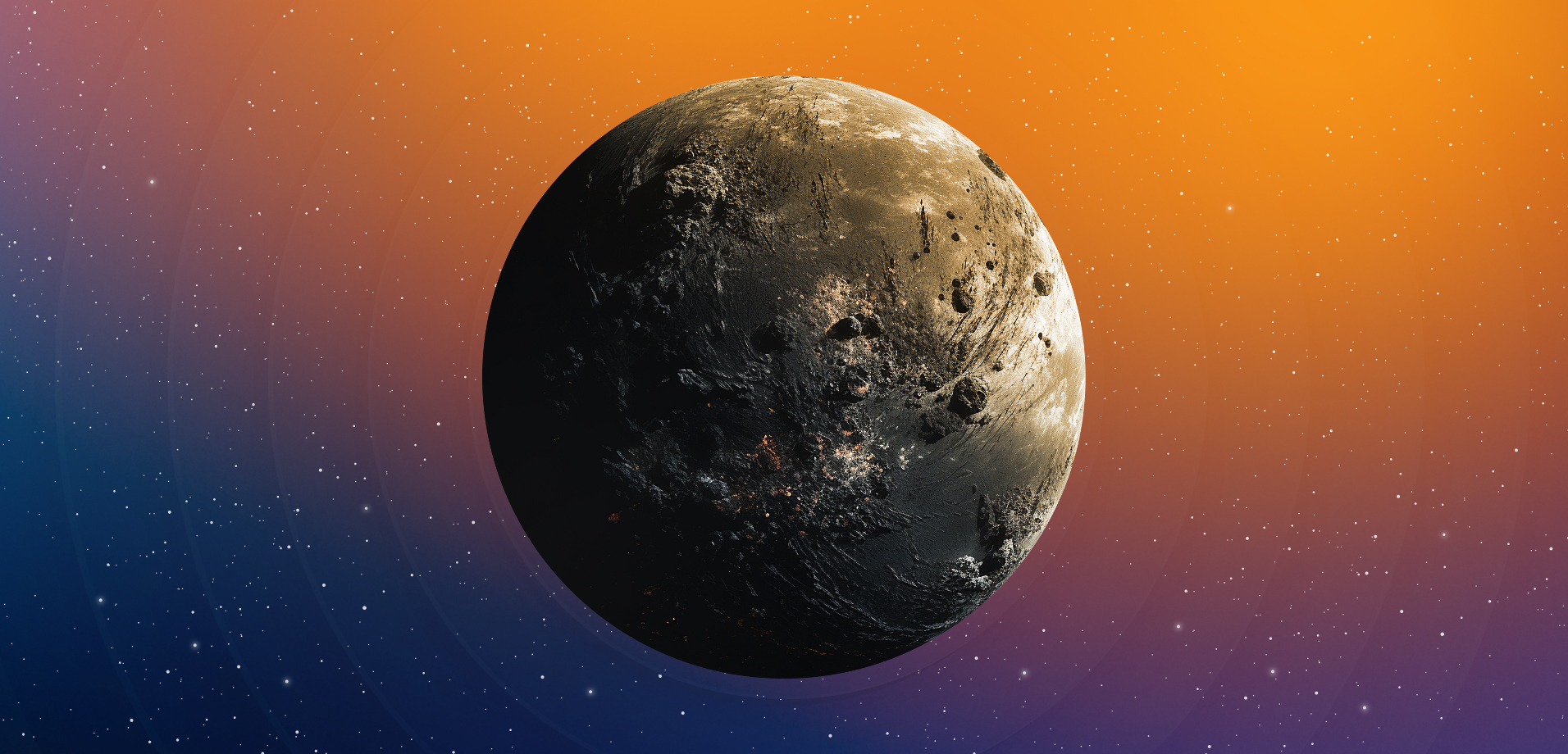
Dwarf planets are one of the mysteries of our solar system. The name was given by the IAU (International Astronomical Union) in 2006 to a new class of astronomical objects that inhabit our solar system. The turmoil was caused by Pluto, which was long considered the ninth planet but ultimately failed to meet stricter definitions. We told you the tangled story of demoted Pluto a while back and today we will talk about the very concept of dwarf planets in our Solar system and everything that goes with it.
What are the dwarf planets?
According to the International Astronomical Union’s 2006 definition, it is an object of planetary mass that:
- rotates in a prograde (same-direction) orbit of the Sun;
- is not a satellite of a planet;
- is massive enough for its gravity to compress the body into a form of hydrostatic equilibrium (an ellipsoidal shape, where any surface irregularities are due to a relatively thin hard crust);
- cannot clear the area around the orbit from other material.
The fourth condition is decisive in the difference between a planet and a dwarf planet. That is, if a planet has not accumulated sufficient mass to collect or, conversely, disperse all the planetesimals in its orbit, and does not orbit its star in isolation (except for satellites and Trojan asteroids), it cannot be considered a planet in the classical understanding.
12 interesting facts about dwarf planets
- To date, the existence of 5 such objects has been confirmed, although scientists believe that there may be hundreds, and even thousands of them in other galaxies.
- All the planets were named after gods from different mythologies. Pluto is the god of the underworld, Ceres is the goddess of grain in Roman mythology. Haumea is the Hawaiian goddess of childbirth and fertility, and Eris is the Greek goddess of chaos and discord. Makemake is a fertility god from Easter Island mythology.
- The usual composition of such planets is rocks and ice.
- All confirmed dwarf planets except Ceres are located beyond the orbit of Neptune, which is why they are also called trans-Neptunian objects.
- Due to their great distance from the Sun, they complete one revolution around a star in hundreds or even thousands of years.
- Eris is the most massive dwarf planet in our system and was once considered to be the 10th planet.
- The closest dwarf planet to Earth is Ceres (average distance 264 million km). A day on it lasts nine Earth hours, and a year lasts 4.5 Earth years.
- Due to their great distance from the Sun, the temperature on these planets is very low: for example, the average temperature of Pluto is minus 240 degrees Celsius.
- Ceres loses 6 kg of its mass every second. This occurs when parts of Ceres’s icy surface heat up and turn to steam.
- Sedna has the longest year among all known celestial bodies in the Solar System. It lasts about 11,487 Earth years.
- No dwarf planet can be seen from Earth with the naked eye, but they are visible through a telescope.
- The only objects of this class that have been more or less well studied are Pluto and Ceres. The first was studied by the New Horizons mission in 2015, and the second by the Dawn mission the same year.
Why was the term coined?
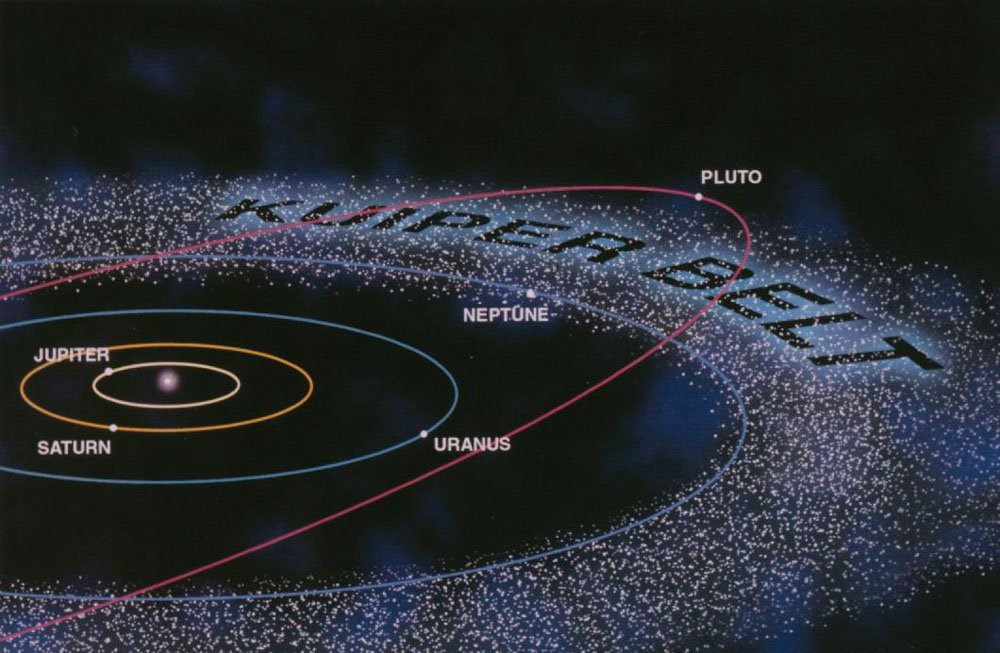
It all started with the discovery of trans-Neptunian objects — celestial bodies located beyond the orbit of Neptune and orbiting the Sun. The first TNO in history was Pluto in 1930. It revolved around the Sun and seemed large enough (10% of the Earth’s mass according to 1950 estimate), so the object was classified as a planet.
In 1978, scientists discovered the second trans-Neptunian object, Charon, which turned out to be a satellite of Pluto and significantly lost in mass estimates because of that, although it continued to maintain its status as a planet. The third trans-Neptunian object (15760) Albion, discovered in 1992, definitively confirmed the presence of the Kuiper belt, a large cluster of small astronomical bodies similar in composition to Pluto and Charon. From this moment on, TNOs began to be detected in large quantities not only in the Kuiper belt, but in even more distant regions from the Sun: the scattered disk and the Oort cloud.
The discovery of three large TNOs in 2005 — Eris, Haumea, and Makemake — became the last straw that forced astronomers to reconsider the classification of celestial bodies. All of them, like Pluto, were similar in characteristics to ordinary planets, with only one difference already known to us — they do not have enough mass to clear the vicinity of their orbits from other bodies. This is how a new astronomic concept arose — a dwarf planet.
What is the origin of the term?
The term was proposed by planetary scientist Alan Stern as part of a tripartite categorization of planetary mass objects in the Solar System. According to Stern, a dwarf planet should be considered a subtype of a planet. The IAU accepted the term but decided to classify such objects into a separate category.
By the way, before the introduction of the new IAU classification, there was a term minor planet or planetoid, which was used to name asteroids. Since 2006, this concept started to include dwarfs and various trans-Neptunian objects. Since 1947, the Minor Planet Center at the University of Cincinnati has been collecting and systematising minor planets. Today, there are almost one and a half million discovered objects on its lists.
Is a dwarf planet called that because of its size?
No. Although Pluto and its newfound colleagues are indeed smaller than Mercury, the smallest planet in our system and even smaller than Earth’s Moon, size is not the key criterion. If it were, Ganymede and Titan, the satellites of Jupiter and Saturn, or some asteroids that are larger than Mercury could have been classified as planets, too. However, the former cannot be considered planets because they do revolve around their own respective planets and not around the Sun, while the latter do not have sufficient gravity to acquire a spherical shape, like the planets.
How many dwarf planets are there in the Solar System
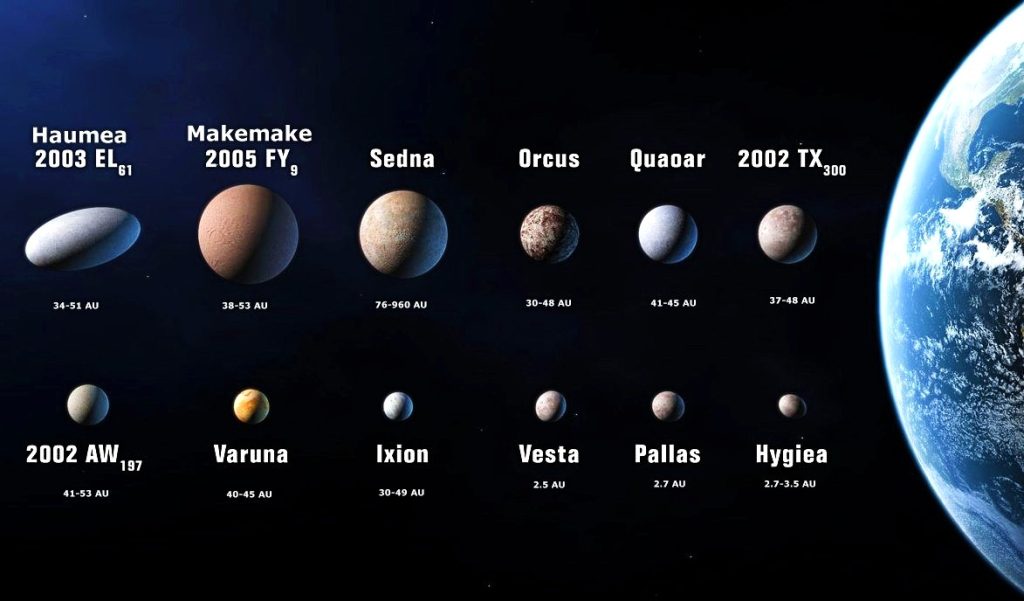
The IAU currently recognises five dwarf planets:
- Pluto,
- Ceres,
- Eris,
- Haumea,
- Makemake.
But not everyone agrees with this decision. So, what are the other dwarf planets in our Solar system? Many astronomers consider at least seven more trans-Neptunian objects to be the most likely dwarf candidates, although the IAU has not assigned them this status yet: Gonggong, Orcus, Quaoar, Sedna, Salacia, Varuna, and Chaos.
Michael Brown, a professor of planetary astronomy at the California Institute of Technology, on whose initiative Pluto was stripped of its planetary status, is confident that more than 40 trans-Neptunian objects will soon be recognized as IAU dwarfs under the current definition. He himself believes that a much larger number of TNOs are vying for this title. In 2011, Brown proposed a list of 390 candidates. In total, various scientists estimate that when the Kuiper belt is explored better, over 250 Pluto’s colleagues could be discovered there and up to 10,000 more beyond it.
Where are the dwarf planets located?
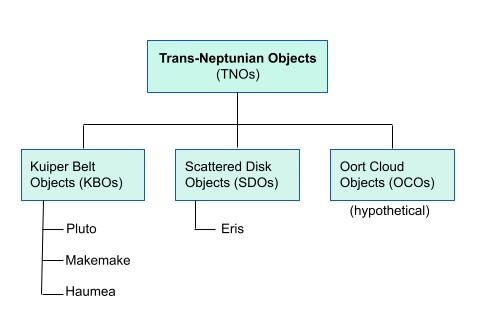
Pluto, Makemake, and Haumea are in the Kuiper belt beyond the orbit of Neptune. Planet Eris is in a scattered disk. The likely candidates are located in the same populations, as well as in the Oort cloud. Only Ceres is located in the asteroid belt between Mars and Jupiter, which is why it has been considered an asteroid almost all the time since its discovery in 1801.
List of dwarf planets in order from closest to the Sun
Now let’s find out what the remarkable features of the recognised microplanets are.
| Figures | Ceres | Pluto | Haumea | Makemake | Eris |
| Orbital distance (AU) | 2.77 | 39.5 | 43.1 | 45.8 | 67.7 |
| Orbital Inclination | 10.6° | 17.1° | 28.2° | 29° | 44° |
| Radius (km) | 487 | 1,137 | 1,436 | 750 | 1,300 |
| Mass (Earth Masses) | 0.00016 | 0.00213 | 0.0007 | 0.0007 | 0.003 |
| Year Length (Earth Years) | 4.6 | 248.5 | 283.3 | 309.9 | 557 |
| Day Length (Earth Days) | 0.38 | 6.39 | 0.16 | Unknown | Unknown |
| Surface Gravity (g) | 0.003 | 0.04 | 0.044 | 0.05 | 0.08 |
| Surface Temperature (approx.) | -105°C | -230°C | -240°C | -243°C | -240°C |
| Apparent Magnitude | 6,64 – 9,34 | 15,1 average | 17,3 | 17 | 18,7 |
| Number of Moons | 0 | 3 | 2 | 1 | 1 |
Ceres
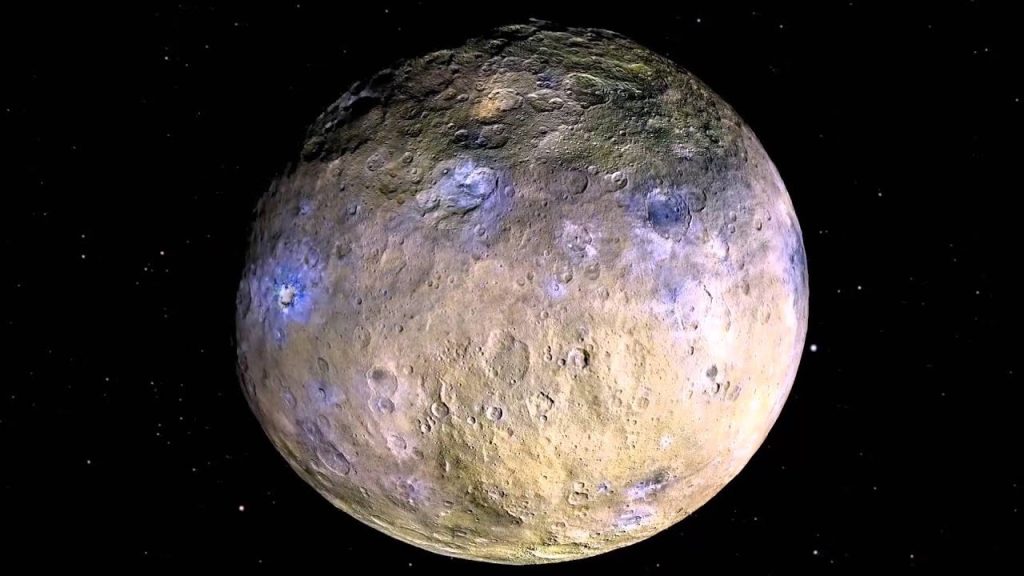
The planet was discovered on January 1, 1801, by Italian astronomer Giuseppe Piazzi at the Palermo Astronomical Observatory. The original name that the scientist proposed was Ceres Ferdinandea, in honour of the Roman goddess of agriculture and King Ferdinand III of Sicily. But since the second part of “Ferdinandea” was unacceptable to other countries, it was subsequently removed.
Ceres was given the title of planet, but by 1802, it had been classified as an asteroid. Ceres is the largest body in the main asteroid belt and the smallest dwarf planet. Its surface area is 2,849,631 square kilometres, slightly larger than Argentina. Ceres has a weak, unstable atmosphere with traces of water vapour. The structure is believed to include a thin layer of regolith, an icy mantle, and a rocky core. Ceres’s mantle contains a significant amount of ice: 200 million km2, which exceeds the amount of fresh water on Earth.
Ceres has about 400 bright regions called sunspots. The two brightest areas, Cerealia Facula and Vinalia Facula, lie in the crater region of Occator Crater. The bright material in the crater consists of sodium carbonate salts, which, on Earth, form under hydrothermal conditions. Although Cerealia Facula is the brightest area on Ceres, it would appear to us like dirty snow.
Ceres is the first dwarf to be visited by a spacecraft (Dawn Mission in 2015). The metal Cerium (Cererium), discovered in 1803, is named after the planet.
Pluto
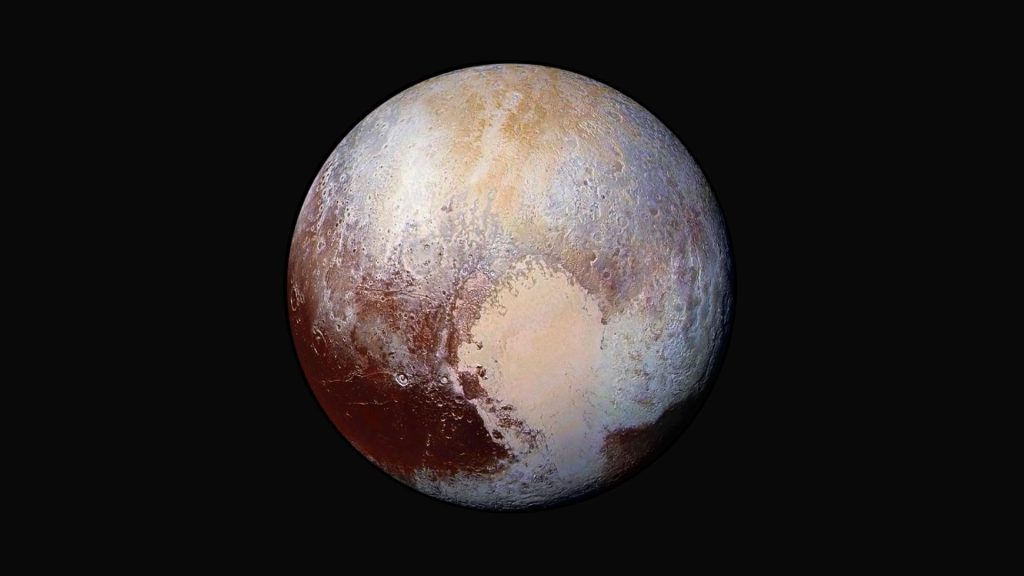
Our well-known dwarf was first discovered on 18th February 1930, by astronomer Clyde Tombaugh while working with the Lowell Observatory telescope in search of Planet X, a hypothetical celestial body influencing the orbit of Uranus.
At first, astronomers wanted to name the new body Zeus, Minerva, Kronos, and also Percival — in honour of Percival Lowell, the founder of the Lowell Observatory. As a result, the name proposed by an 11-year-old schoolgirl from Oxford, Venice Bernie, was chosen. When asked how she would name the new planet, the girl replied that since it was so distant and cold, it should be called “Pluto” in honour of the Roman god of the underworld. The name was adopted unanimously since it not only corresponded to the long tradition of naming planets after gods but also paid a kind of tribute to Percival Lowell (the first two letters corresponded to his initials P.L.)
Pluto is the only planet in our solar ystem demoted to a minor planet and the largest of the five existing microplanets (0.22% of the Earth’s mass).
Due to the eccentricity of its orbit, this dwarf planet, at its perihelion, is closer to the Sun than Neptune. Just like Venus, Pluto’s direction of rotation around its axis is retrograde, that is, opposite to the direction of rotation of the planets around the Sun.
The planet has five satellites: Charon, Styx, Nyx, Kerberos, and Hydra, the largest of which, Charon, has a diameter only half the size of Pluto. Both Charon satellite and its main planet orbit around a point in space that lies between them, similar to the orbits of binary star systems. For this reason, some scientists call Pluto and Charon a double planet.
There are organic compounds on the surface, which is why our dwarf has a reddish tint. Hubble images show polar caps, likely made of frozen nitrogen, reaching a height of three km. The darker areas are likely covered in methane frost, darkened by exposure to sunlight. The object has an icy ridge topography that looks like snake skin. Another distinctive feature on Pluto’s surface is a large, heart-shaped rocky area informally known as Tombaugh Regio (after Clyde Tombaugh). The icy dwarf has a thin atmosphere, the density and thickness of which varies greatly depending on its distance to the Sun.
It is the second dwarf planet after Ceres to be visited by a research probe (New Horizons in July 2015).
The chemical element plutonium, discovered in 1940, is named in its honour.
Haumea
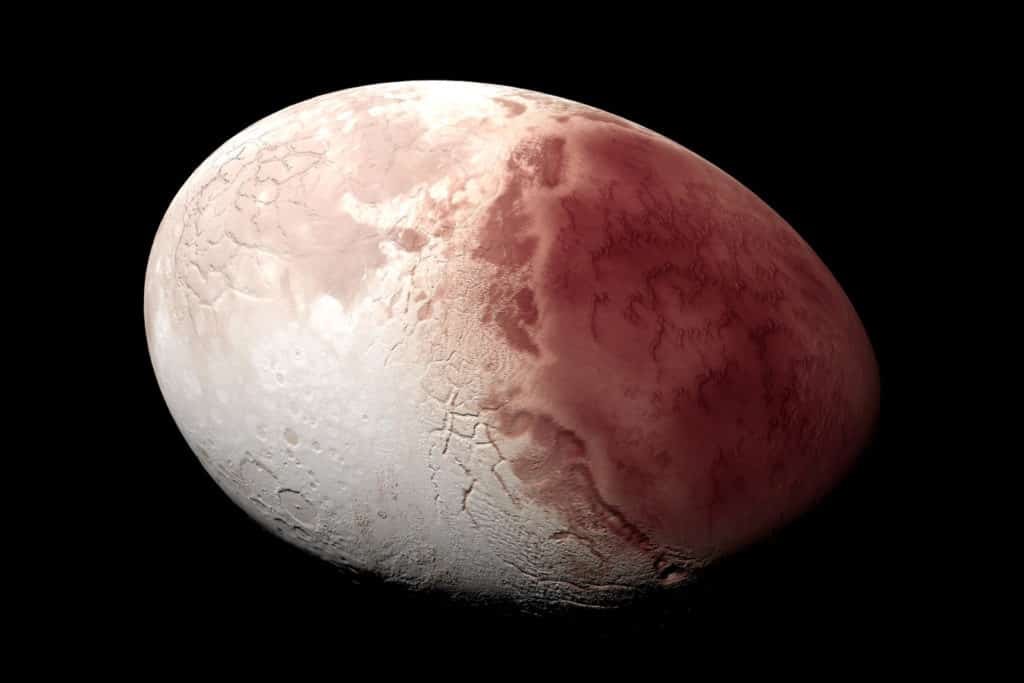
The second largest dwarf planet after Pluto was discovered on July 29, 2005, by Spanish astronomers from the Ortiz team, who carried out observations at the Sierra Nevada Observatory in Spain. It was named after the Hawaiian goddess of fertility and childbirth, Haumea, from Nuumealani, the sacred land of the gods.
Haumea is one of the fastest-rotating large objects in the solar system. Such rapid rotation makes its shape elongated. The celestial object has two satellites, Hiʻiaka and Namaka, as well as a ring system. There is a theory that Haumea originated as the result of the collision of two bodies.
Spectral studies of Haumea show that its surface is 75% covered with water ice, similar to that which forms in freezers. Typically, the formation of such ice structures requires a constant source of energy. Astronomers speculate that the energy may come from radioactive elements within Haumea, as well as from tidal forces between the planet and its moons.
Because Haumea is 43 times farther than Earth from the Sun, scientists don’t have any mission plans for it yet. It takes approximately 14.25 years for a research probe to reach it.
Makemake
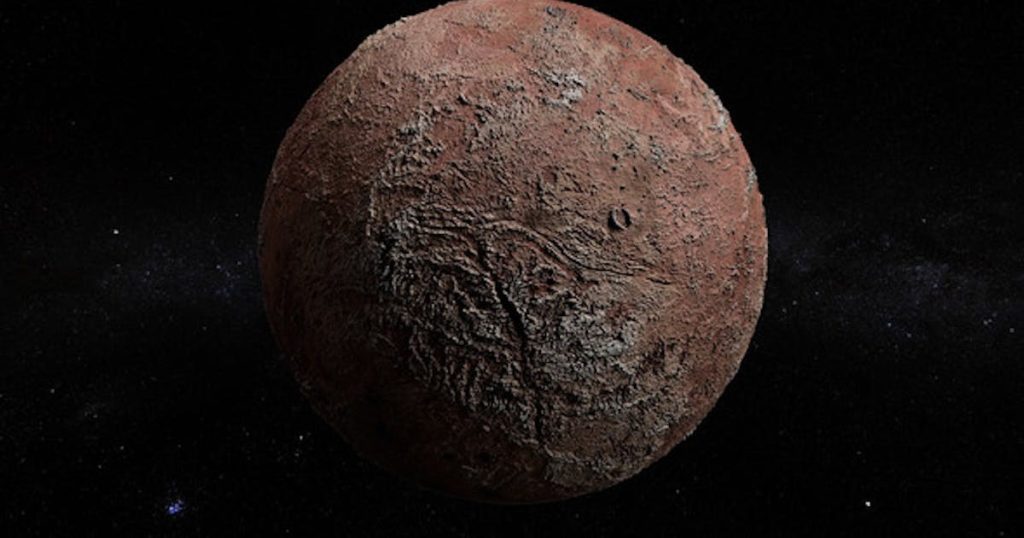
Makemake was discovered on March 31, 2005, by a group of American astronomers at the Palomar Observatory led by Michael Brown. Since this event occurred shortly before Easter, the planet was named after the god of human creation and abundance, originating from the myths of the Rapanui people, the native inhabitants of Easter Island.
Makemake’s orbit is further than Pluto’s. Previously, it was believed that the planet had no satellites, but in 2016, the Hubble telescope discovered a small dim object called S/2015 (136472) 1.
Makemake has a fairly high albedo, reflecting 70% of all light falling on its surface. This makes it visible even with a mid-range amateur telescope. The surface is covered with methane, ethane and, possibly, nitrogen ice. The high content of tholin, an organic substance in the soil, gives the surface a reddish tint similar to that of Mars.
It is possible that Makemake has a temporary atmosphere, which can be fueled by methane evaporating at perihelion. For an unmanned spacecraft, a flight to Makemake along an optimal trajectory will take about 16 years using a gravity assist manoeuvre near Jupiter. The launch window opens rarely, and the closest available dates are 2024 and 2036. So, space agency scientists and engineers still have time to equip the mission.
Eris
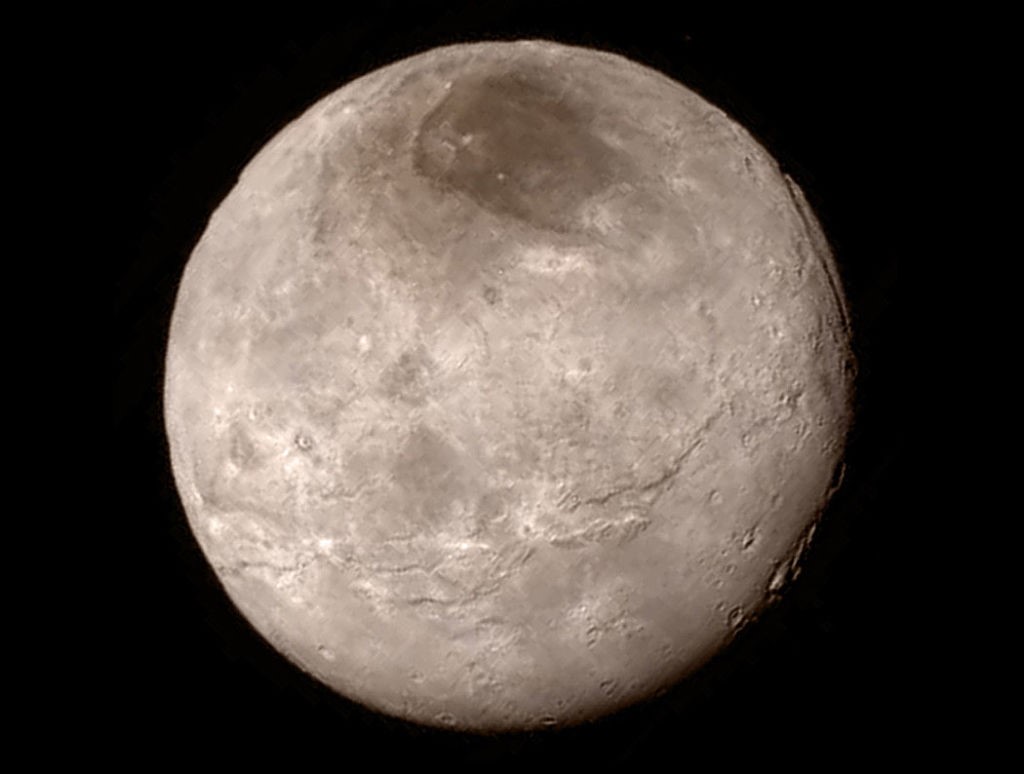
Eris was discovered by a team of American scientists led by Michael Brown and named after the Greek goddess of discord.
Eris is one of Pluto’s largest counterparts and is also the most distant from the Sun. It makes one revolution around the star in 558 years. Initially, it was considered the tenth planet, but in 2006, it was decided that, like Pluto, it did not meet the list of requirements.
Eris’s albedo is estimated at 0.96, which is higher than that of any other large body in the Solar System except Saturn’s sixth-largest moon, Enceladus. It is assumed that the reason for such a high albedo is methane snow mixed with nitrogen ice covering the surface of the planet.
The surface area of Eris is approximately equal to that of Russia, the largest country on the map of the Earth. Eris has no atmosphere, but when it comes closer to the Sun in about 200 years, the deposits of methane ice on its surface will thaw a little, and Eris will find itself surrounded by a thin methane shell.
The planet has only one satellite – Dysnomia (anarchy). This, according to old legends, was the name of Eris’s daughter. It will take the spacecraft about 25 years to reach this dwarf planet.
Additional sources of information:
- IAU RESOLUTION B5 Definition of a Planet in the Solar System https://www.iau.org/static/resolutions/Resolution_GA26-5-6.pdf
- Mike Brown. How many dwarf planets are there in the outer solar system?https://web.gps.caltech.edu/~mbrown/dps.html
- Pluto and the Developing Landscape of Our Solar System https://www.iau.org/public/themes/pluto/
- Gingerich, O. (2006, August). The Path to Defining Planets. https://www.iau.org/static/publications/ga_newspapers/20060812.pdf
- David Kestenbaum. Dwarf Planets May Finally Get Respect. 2006 https://www.npr.org/2006/08/10/5631291/dwarf-planets-may-finally-get-respect
- NASA. Planets, Dwarf Planets, and Moons https://web.archive.org/web/20100211161824/http://astronomy2009.nasa.gov/topics_sep.htm
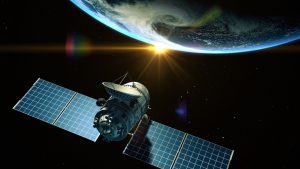



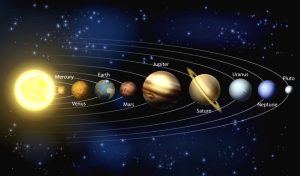

Thank you for your comment! It will be visible on the site after moderation.